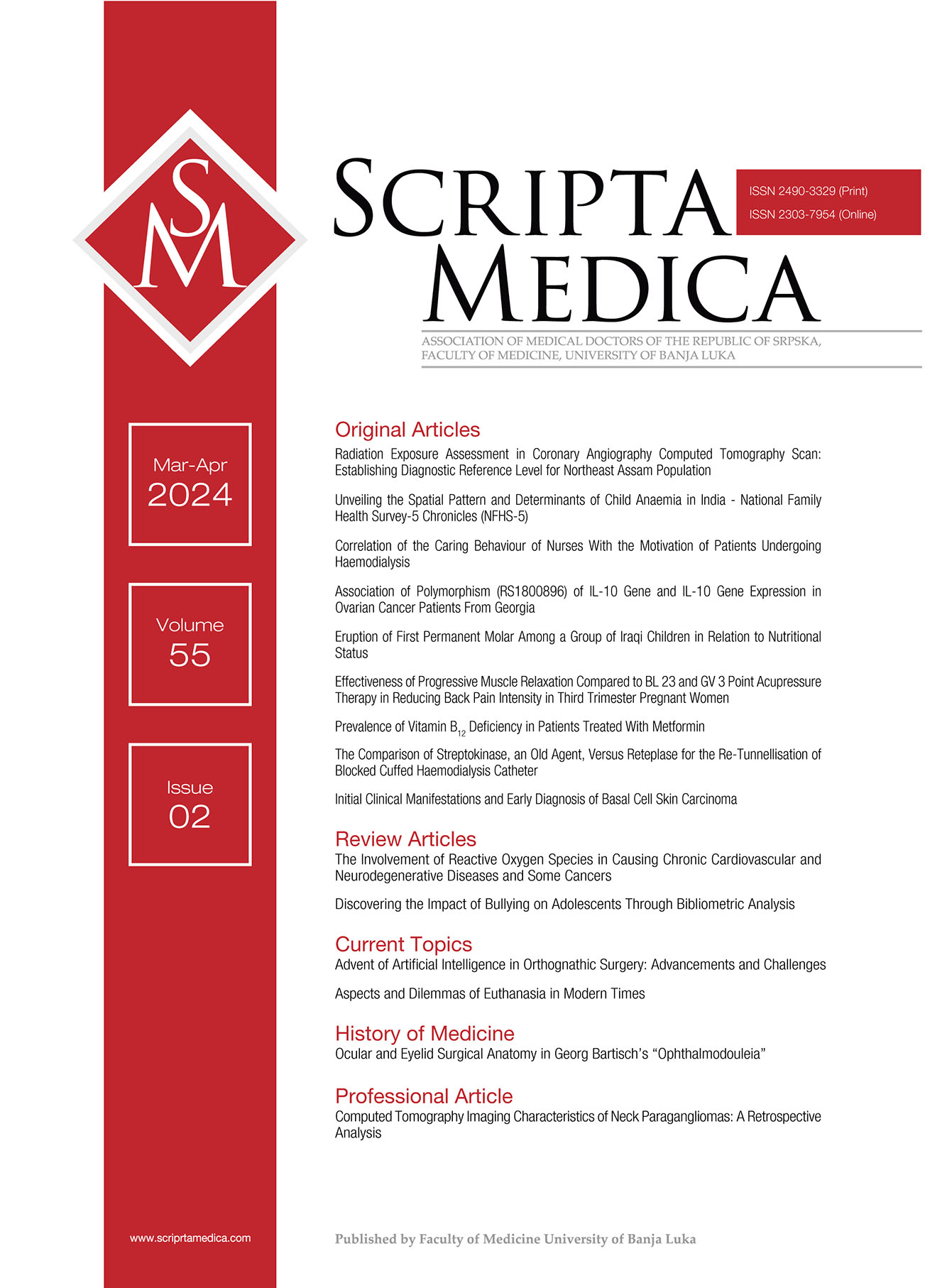Computed Tomography Imaging Characteristics of Neck Paragangliomas: A Retrospective Analysis
Retrospective study on CT parameters of neck paragangliomas.
Abstract
Background/Aim: Paragangliomas are rare neuroendocrine tumours arising from paraganglia of the autonomic nervous system. Computed tomography (CT) imaging plays a crucial role in the evaluation and characterisation of neck paragangliomas. This retrospective study aimed to analyse the CT imaging features of neck paragangliomas to enhance diagnostic accuracy and delineate the radiological characteristics associated with these tumours.
Methods: A retrospective review of CT imaging studies of patients diagnosed with neck paragangliomas from March 2021 to October 2023 was conducted. Imaging characteristics including tumour location, size, enhancement pattern, vascularity, calcifications, adjacent tissue involvement and relationship with surrounding structures were analysed.
Results: A total of 87 patients with histologically confirmed neck paragangliomas were included in the study. CT imaging revealed typical findings of neck paragangliomas ie well-defined hyper-vascular masses with avid contrast enhancement, commonly located at the carotid bifurcation or along the carotid sheath. In addition, characteristic flow voids and the presence of feeding vessels were observed on CT angiography in a significant number of cases. The imaging analysis also identified calcifications and encasement of adjacent structures as frequent features of advanced-stage paragangliomas.
Conclusions: CT imaging of neck paragangliomas demonstrated consistent radiological features, including hypervascularity, contrast enhancement and distinct anatomic locations. Knowledge of these imaging characteristics is essential for accurate diagnosis and preoperative planning. Recognition of these features on CT imaging can aid in differentiating paragangliomas from other neck masses and facilitate appropriate management strategies.
References
Offergeld C, Brase C, Yaremchuk S, Mader I, Rischke HC, Gläsker S, et al. Head and neck paragangliomas: clinical and molecular genetic classification. Clinics (Sao Paulo). 2012;67 Suppl 1(Suppl 1):19-28. doi: 10.6061/clinics/2012(sup01)05.
Sandow L, Thawani R, Kim MS, Heinrich MC. Paraganglioma of the head and neck: a review. Endocr Pract. 2023 Feb 1;29(2):141-7. doi: 10.1016/j.eprac.2022.10.002.
Lin EP, Chin BB, Fishbein L, Moritani T, Montoya SP, Ellika S, et al. Head and neck paragangliomas: an update on the molecular classification, state-of-the-art imaging, and management recommendations. Radiol Imaging Cancer. 2022 May;4(3):e210088. doi: 10.1148/rycan.210088.
Thelen J, Bhatt AA. Multimodality imaging of paragangliomas of the head and neck. Insights Imaging. 2019 Mar 4;10(1):29. doi: 10.1186/s13244-019-0701-2.
Van Den Berg R. Imaging and management of head and neck paragangliomas. Eur Rad. 2005 Jul;15:1310-8. doi: 10.1007/s00330-005-2743-8.
Dhiman DS, Sharma YP, Sarin NK. US and CT in carotid body tumor. Indian J Radiol Imaging. 2000;10:39–40. doi: 10.7860/IJARS/2017/29448:2283.
Whalen RK, Althausen AF, Daniels GH. Extra-adrenal pheochromocytoma. J Urol. 1992 Jan 1;147(1):1-0. doi: 10.1016/s0022-5347(17)37119-7.
Boedeker CC, Ridder GJ, Schipper J. Paragangliomas of the head and neck: diagnosis and treatment. Fam Cancer. 2005;4(1):55-9. doi: 10.1007/s10689-004-2154-z.
- Authors retain copyright and grant the journal right of first publication with the work simultaneously licensed under a Creative Commons Attribution License that allows others to share the work with an acknowledgement of the work's authorship and initial publication in this journal.
- Authors are able to enter into separate, additional contractual arrangements for the non-exclusive distribution of the journal's published version of the work (e.g., post it to an institutional repository or publish it in a book), with an acknowledgement of its initial publication in this journal.
- Authors are permitted and encouraged to post their work online (e.g., in institutional repositories or on their website) prior to and during the submission process, as it can lead to productive exchanges, as well as earlier and greater citation of published work (See The Effect of Open Access).

